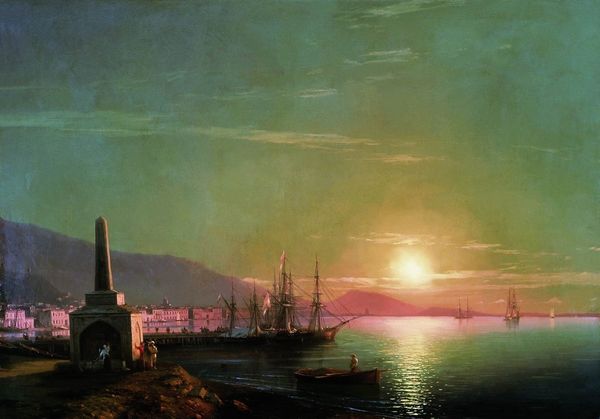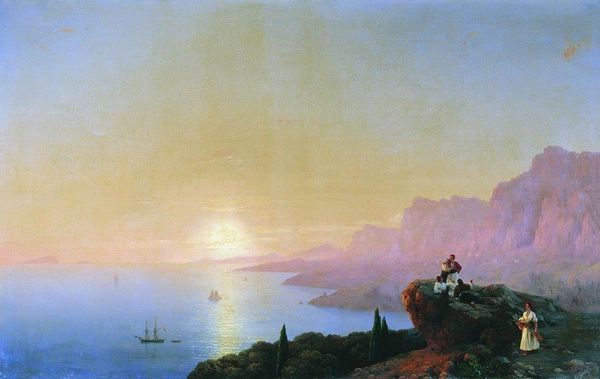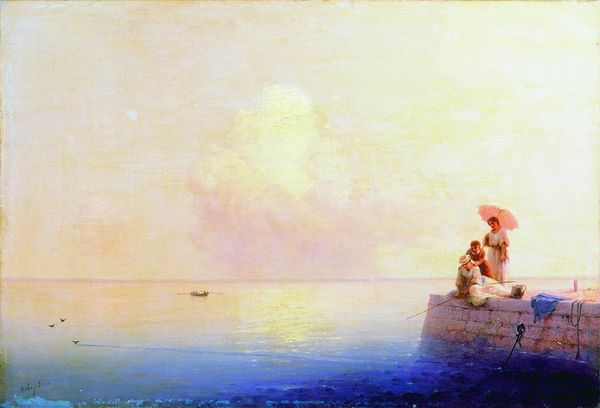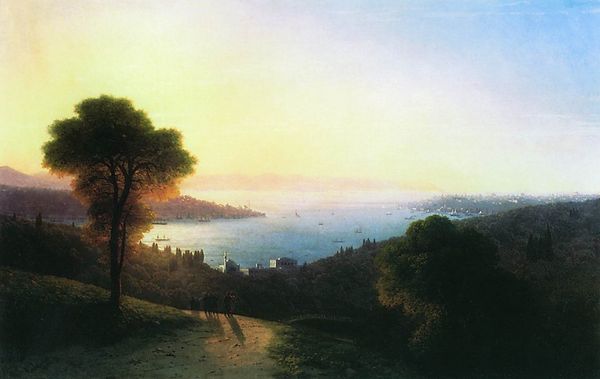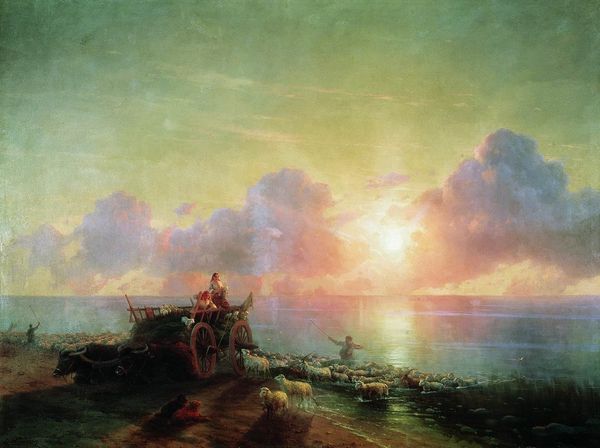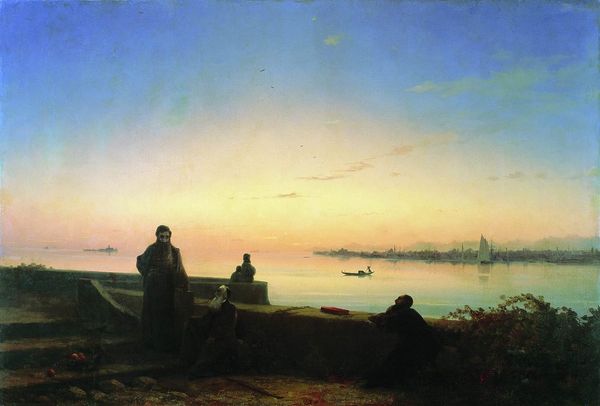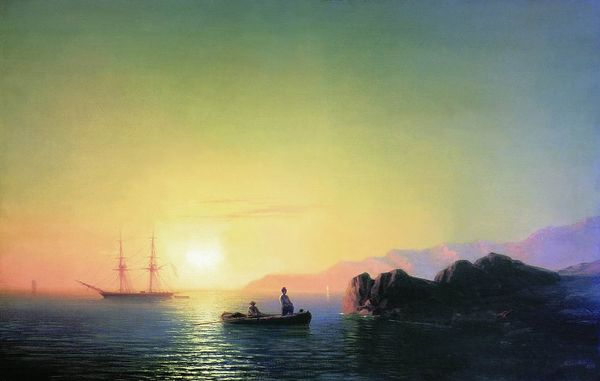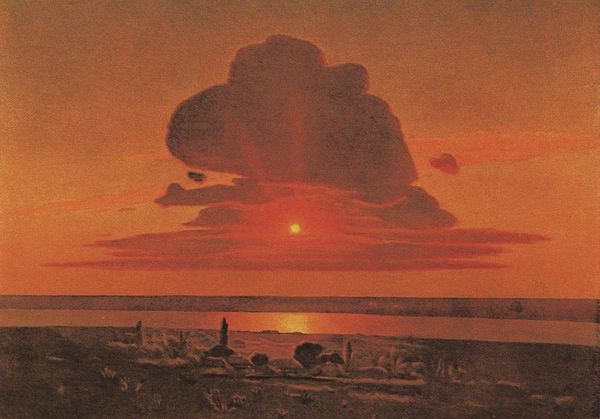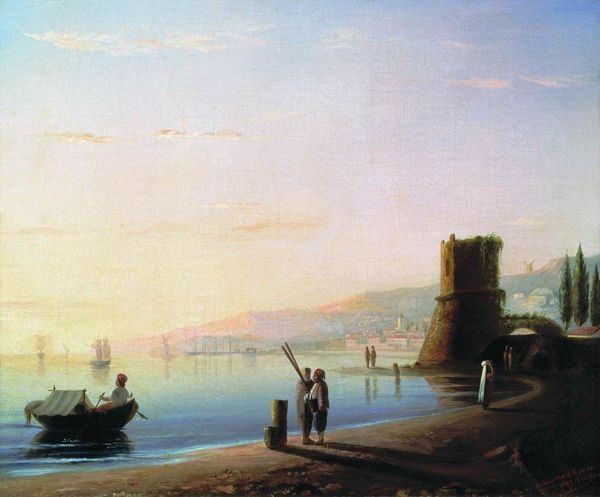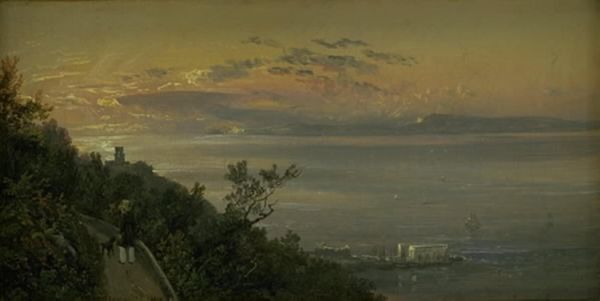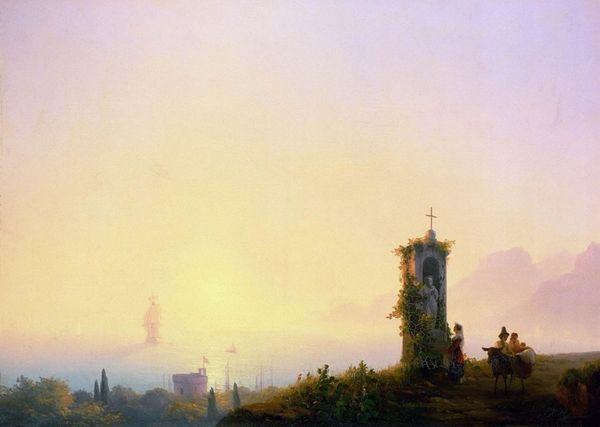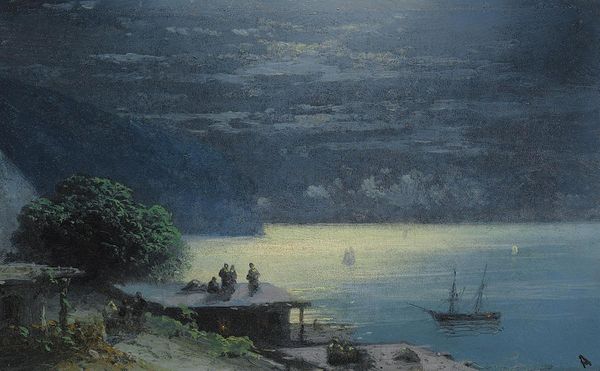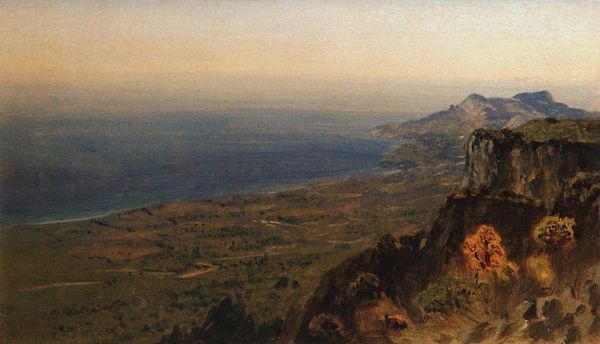
Copyright: Public domain
Curator: Aivazovsky’s “Malakhov Hill,” painted in 1893 using oil paint, presents a striking panorama. What do you make of it? Editor: The vastness is what strikes me. The immense sky, the hazy city... it feels incredibly still, almost suspended in time despite whatever turmoil it depicts. The paint is thickly applied, especially in the foreground. You can see the texture and how he worked with it, layer upon layer. Curator: Indeed. That stillness speaks volumes, doesn’t it? This scene recalls the Crimean War siege. The strategic Malakhov Hill looms over Sevastopol, embodying fierce conflict, a history palpable in its cultural memory. Editor: I am curious to think about Aivazovsky's process here, and how the realities on the ground informed it. Plein-air painting adds such an interesting dynamic, almost performative, especially considering the scope. He needed to find a balance between material immediacy and capturing epic narratives. Curator: That immediacy connects to its Romantic leanings, despite also flirting with realism. Notice the symbolic weight of the soldier figure overlooking the vista. What stories do his stance and dress convey about loss, resilience and power? Editor: I think this romanticism comes in part through its relationship to landscape. It does make me wonder how reliant he was on pre-mixed colours for his tones versus hand mixing—impacting production, reception and aesthetics of landscape at the time. Curator: Consider Aivazovsky’s position within both artistic and imperial structures. His seascapes flattered Russian naval power, creating continuity of power through mythologized views. He carefully balances these roles. Editor: Absolutely, it prompts a complex engagement for modern audiences—balancing respect for his technical skill and recognition that paintings don’t happen in a vacuum. Art both makes and hides material and cultural relations. Curator: His treatment of sky and sea here as visual allegories of fate feels intensely personal. It prompts consideration of national identity, trauma, and the sea's enduring symbolism through artistic license and cultural touchstones. Editor: It pushes me to consider all the unseen hands that went into the canvas, the grinding of the pigments, the sailors depicted on ships out at sea, all interconnected. A powerful, albeit unsettling image, nonetheless.
Comments
No comments
Be the first to comment and join the conversation on the ultimate creative platform.
